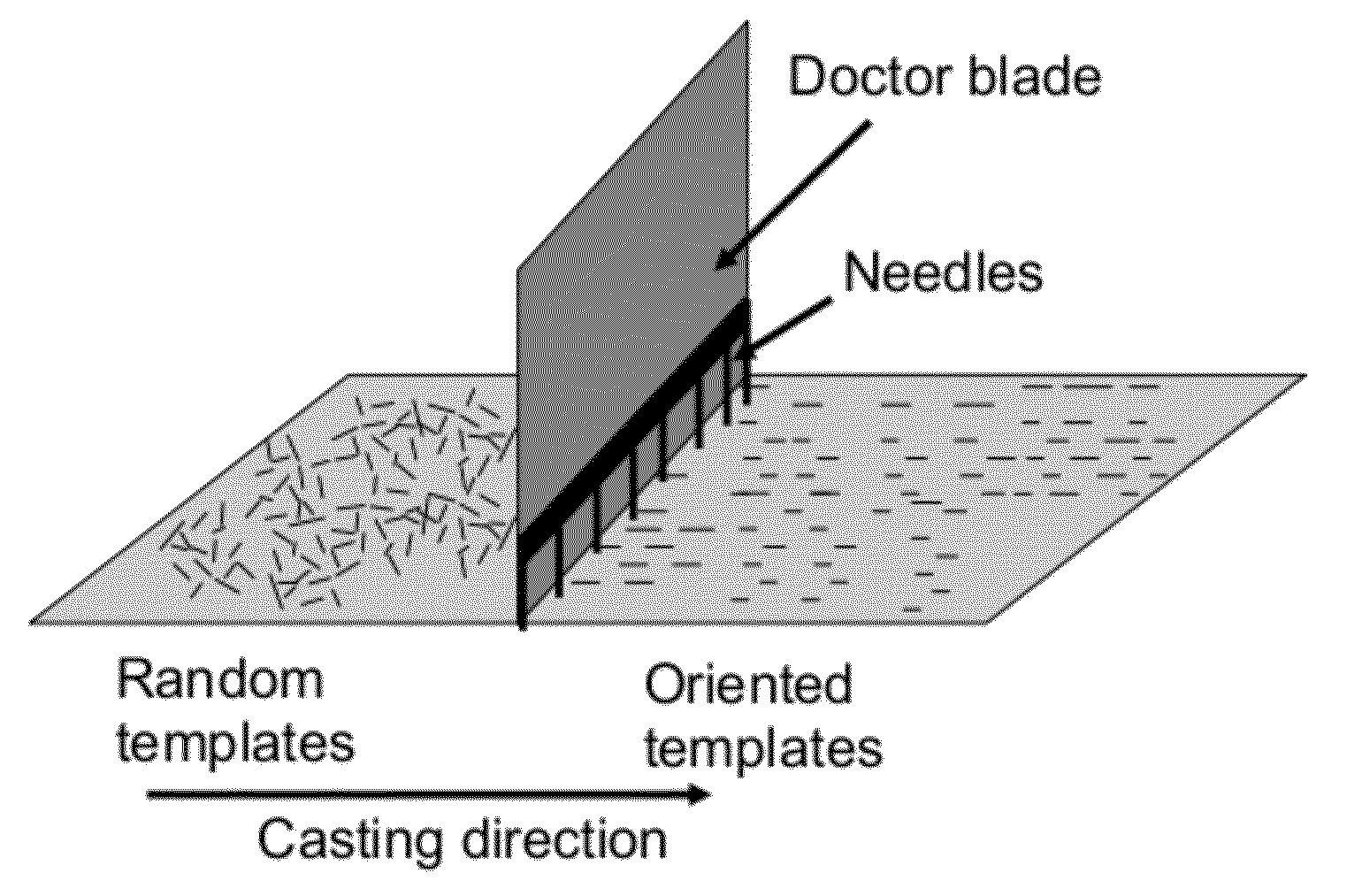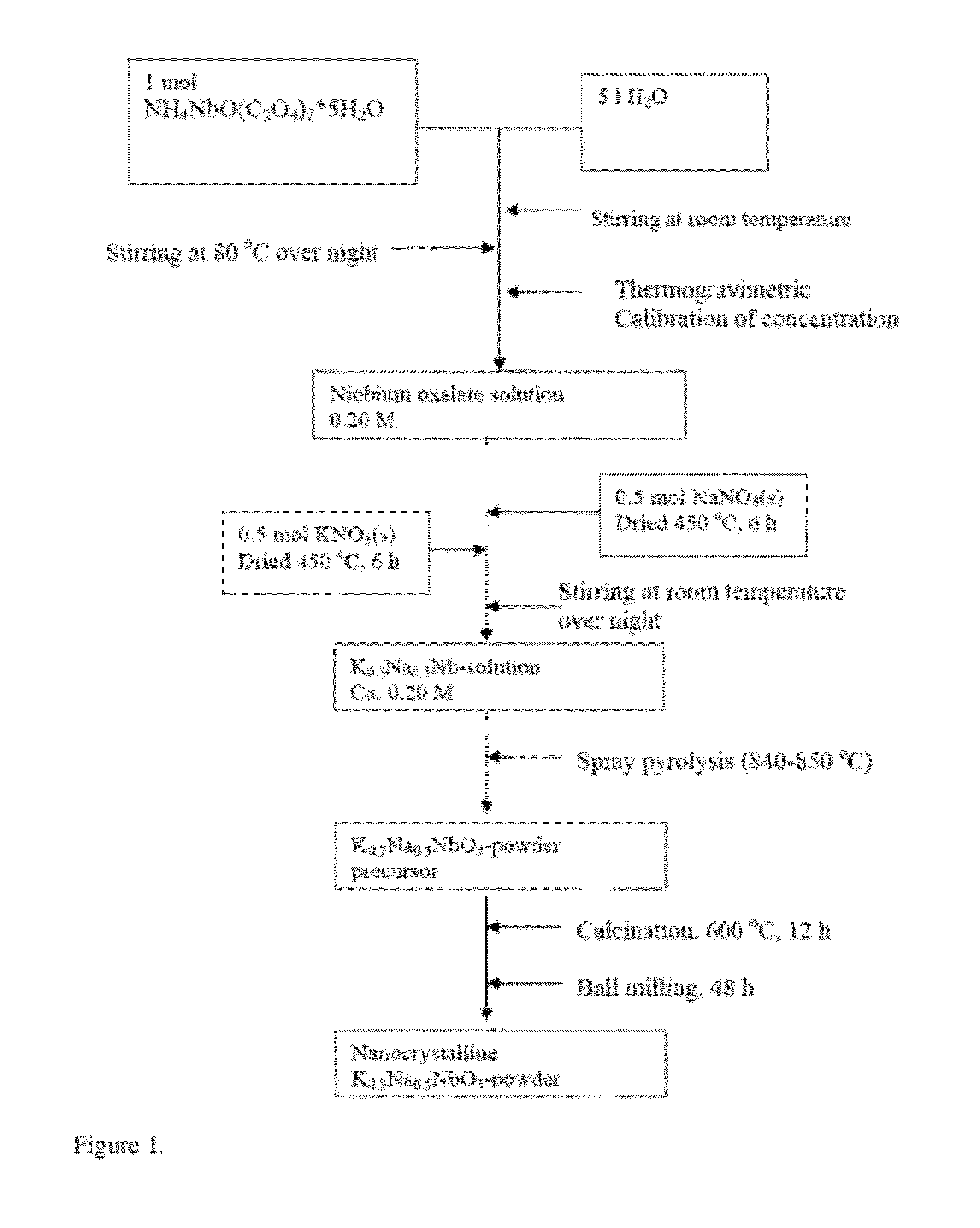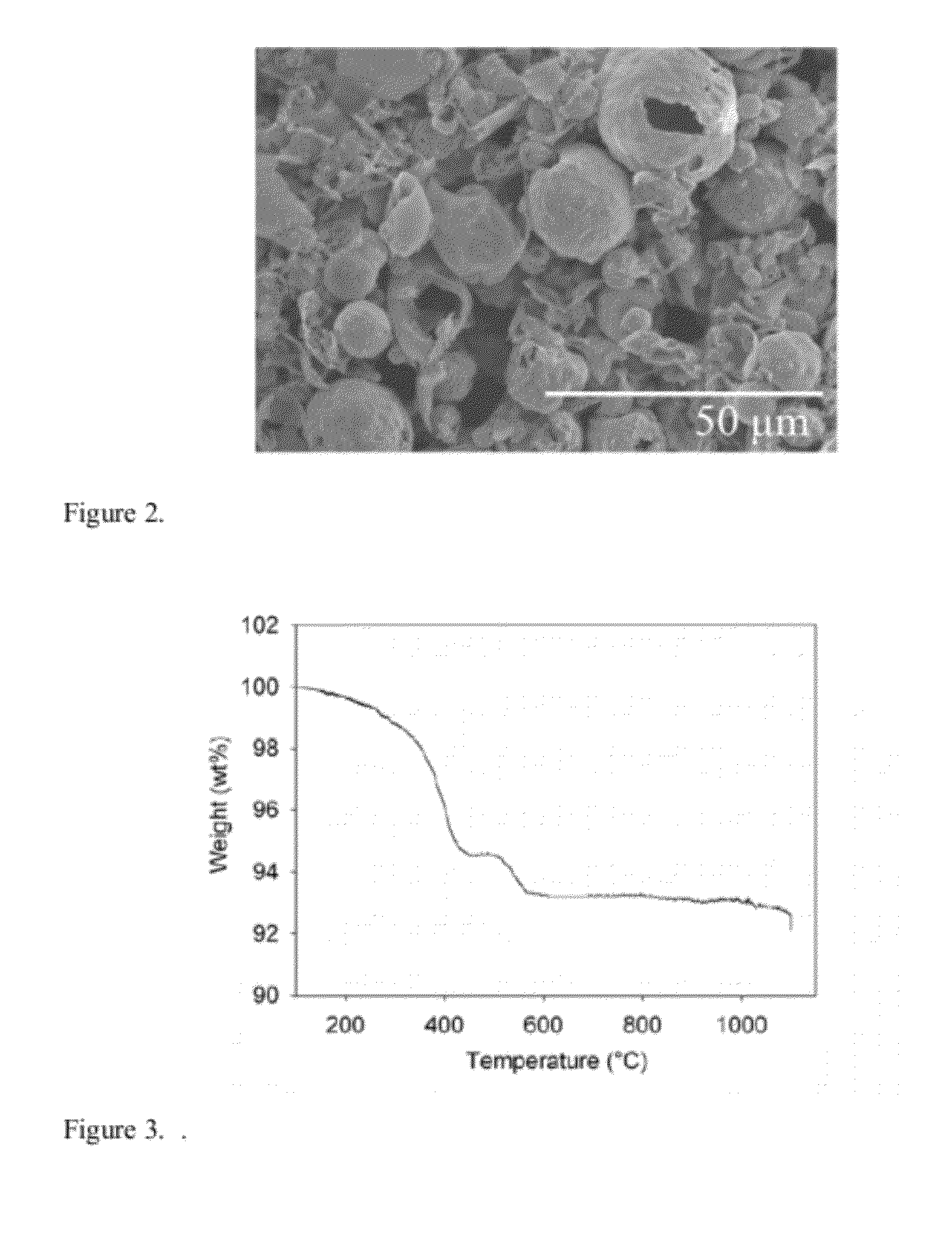Process
a technology of ferroelectric materials and process, which is applied in the field of new, can solve the problems of difficult piezoelectric pbnbsub>2, cracking of ceramics, poor piezoelectric properties, etc., and achieve the effects of improving product properties, high density, and controlling microstructur
- Summary
- Abstract
- Description
- Claims
- Application Information
AI Technical Summary
Benefits of technology
Problems solved by technology
Method used
Image
Examples
example 2
KNbO3 Nanopowders Prepared by Spray Pyrolysis
[0170]The aqueous precursor solution was prepared in a similar manner as for Example 1, except that 1 mol of potassium nitrate was added instead of half a mole of sodium and potassium nitrate. The precursor solution was spray pyrolyzed as described under Example 1 and the resulting powder precursor was treated in a similar manner. The morphology of the KNbO3 precursor powder and powder calcined at 800° C. followed by ball milling for 48 hours is shown in FIG. 8. The powder after calcination and milling consists of submicron particles. The x-ray diffractogram in FIG. 9 shows that the powder is single phase. Onset of densification is recorded to be at 1000° C.
example 3
NaNbO3Nanopowders Prepared by Spray Pyrolysis
[0171]The aqueous precursor solution was prepared in a similar manner as for Example 2, except that 1 mole of sodium nitrate was added instead of one mole of potassium nitrate. The precursor solution was spray pyrolyzed as described under Example 1 and the resulting powder precursor was treated in a similar manner. The morphology of the NaNbO3 precursor powder and powder calcined at 800° C. followed by ball milling for 48 hours is shown in FIG. 10. The powder after calcination and milling consists of submicron particles. The x-ray diffractogram in FIG. 11 shows that the powder is single phase. Onset of densification is recorded to be at 1200° C.
example 4
The Fabrication of the Anisometric KNN (K0.5Na0.5NbO3)
[0172]The fabrication of the anisometric KNN templates was performed using two separate steps. The non-perovskite K2Nb4O11 compound with high aspect ratio was first prepared by molten salt synthesis at 1000° C. for 6 h in air. The needle-like particles were converted to KNN by chemical conversion in molten KCl at 800° C. for 30min. A SEM image of the KNN templates prepared by chemical conversion is shown in FIG. 15a. The templates had a needle-like shape with dimensions 0.5-1 μm in thickness and 15-20 μm in length. The templates had an orthorhombic crystal structure with lattice parameters a=3,961 Å, b=5,670 Å, c=5,698 Å and the high aspect ratio along the [001] direction.
PUM
| Property | Measurement | Unit |
|---|---|---|
| Temperature | aaaaa | aaaaa |
| Temperature | aaaaa | aaaaa |
| Temperature | aaaaa | aaaaa |
Abstract
Description
Claims
Application Information
 Login to View More
Login to View More - R&D
- Intellectual Property
- Life Sciences
- Materials
- Tech Scout
- Unparalleled Data Quality
- Higher Quality Content
- 60% Fewer Hallucinations
Browse by: Latest US Patents, China's latest patents, Technical Efficacy Thesaurus, Application Domain, Technology Topic, Popular Technical Reports.
© 2025 PatSnap. All rights reserved.Legal|Privacy policy|Modern Slavery Act Transparency Statement|Sitemap|About US| Contact US: help@patsnap.com



